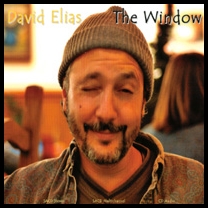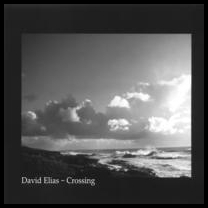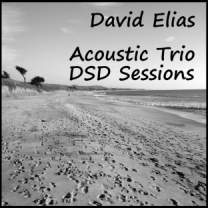 Over the past few years, high resolution audio downloads have become increasingly popular, with sites such as HDTracks, NativeDSD, Acoustic Sounds, and HighResAudio offering downloads in high resolution DSD, PCM, and now MQA formats.
Over the past few years, high resolution audio downloads have become increasingly popular, with sites such as HDTracks, NativeDSD, Acoustic Sounds, and HighResAudio offering downloads in high resolution DSD, PCM, and now MQA formats.
DSD stands for Direct Stream Digital. It was originally developed for the purpose of archiving analog master tapes. It generally has a bit-depth of 1-bit, and a sampling rate of 2.8224 MHz, which is 64 times the sampling rate of CD Audio at 44.1 kHz, and as such is often referred to as DSD64. DSD64 is the most common variant of the format, but there are also DSD128 and DSD256 variants available, in which the sample rate is either doubled or quadrupled, respectively. When Super Audio CD (SACD) was introduced, DSD became widely available to consumers as it was chosen to be the encoding format for SACD.
PCM stands for Pulse Code Modulation. It is an uncompressed digital audio that is found in CDs, DVD-Audio discs, and digital audio file formats such as WAV, FLAC and ALAC. Popular high resolution audio formats such as Dolby TrueHD and DTS-HD Master Audio decode into PCM as well. For consumer purposes, PCM bit-depth generally ranges from 16 to 24 bits, with sample rates up to 192 kHz and higher, and it also has multichannel audio capabilities.
MQA stands for Master Quality Authenticated. It is a relatively recent digital audio format that aims to capture the sound of the original studio master recording. MQA uses a process it refers to as "Music Origami" to fold the original performance capture into a file small enough to stream, and through the use of specialized digital filters, MQA is able to reduce distortion and prevent any temporal "blurring" that results in the smearing of transients. When processed by an MQA decoder such as the UDP-205, the file can be completely unfolded to deliver the full studio sound.
File sizes vary greatly between the different formats, with 24/192 PCM, DSD128 and DSD256 generally requiring more storage.
David Elias is an independent musician who has been recording in DSD since 2000, releasing hybrid multichannel SACDs in 2003 and 2005 and pioneering DSD Downloads online in 2009. He has made a number of demo tracks available for OPPO customers in a variety of formats, including native DSD, PCM, and more recently, MQA. The nice thing about owning a player that supports a wide variety of formats is that you are able to decide for yourself whether you prefer DSD, PCM, or MQA audio.
The easiest way to play the files is to simply copy them to a USB hard drive or thumb drive, plug the drive into one of the USB ports on your OPPO player (BDP-103/D, BDP-105/D, UDP-203, and UDP-205) and browse for the file from the Music entry on the player's Home Menu. Note: MQA file support is only available on the UDP-205.
David Elias began working with DSD in 2000 using a minimal microphone/preamp setup and recording directly to a prototype 2-channel Sony SACD Project DSD mastering/archiving workstation. Working with Gus Skinas (www.SuperAudioCenter.com) he went on to record live studio performances with a large acoustic band directly to DSD 8-tracks in 2002. This resulted in the landmark independent hybrid multichannel SACD "The Window". The followup award-winning SACD "Crossing" was released in 2005. Both SACDs were mixed for both stereo (2.0 mix) and multichannel (5.0 mix) and received the coveted "Brutus Award for DSD Excellence" from Dr. David W. Robinson, Positive Feedback.
A new Pure DSD Download release "Acoustic Trio - DSD Sessions" was released in November 2013. It presents 14 songs as unedited live studio recordings with minimal micing and no edits or overdubs. Dr. David W. Robinson described this collection of original independent acoustic music as "exceptional compositions...exceptional performances...and rich, harmonic, organic sound, as natural and mellow via DSD as one could wish...10 stars."
These and other DSD Downloads are available from his website at www.davidelias.com (stereo & MCH) as well as from www.highresaudio.jp, www.SuperHiRez.com, www.HighDefTapeTransfers.com and www.NativeDSD.com.
Demo Tracks by David Elias
The following notes and descriptions are from David himself:
Listen to these samples of "Vision of Her" on the OPPO and try to form your own opinion of what sounds "right" or "best" to you. The original DSF file used DSD technology for encoding. That is how the song was recorded and mixed and mastered. The other digital formats were created from the DSD stereo master as PCM encoded audio files. This transformation process used a software application from Korg called AudioGate. In these cases, AudioGate was used to "downsample" and convert the original DSD source audio file to the various PCM formats at varying lower resolutions.
By the way, the ubiquitous MP3 digital format is also a PCM format. However MP3 is referred to as a “lossy” format because in order to compress the data to file sizes much smaller than other formats, it “loses” some of the audio information and so some of the audio quality. As a general rule of thumb, the lower the PCM sample rate, the lower the sound quality on playback.
This is Important to Think About: If you create a very high resolution recording and turn it into lower (lossless or lossy) formats, it can still sound very good because the source was good! You cannot do the reverse which is take a very poor sounding recording in any low resolution format and make it sound really good in a higher resolution format. This is why I always encourage musicians and studios to use DSD for their source recordings!
If you are unsure about what audio hi-res is about, think of how high resolution photographs are presented. If you take a 12 megapixel digital photo as a clear image, it can have terrific quality. It can also be reduced to a very small JPG (say 200 pixels) at 72 dpi and still look quite good. However if you start with a 200x200 pixel graphic image and try to expand that to say 1400x1400 pixels, you will not see any improved quality in the result. In fact, it will probably look a lot worse! DSD gives you that very high quality source image which translates very well to other formats including PCM and vinyl.
 "Vision of Her"
"Vision of Her"
This Sonoma Pure DSD recording is in different audio file formats for comparisons as demos. The acoustic trio was arranged in a small circle with minimal micing and no isolation. The live studio takes captured and presented with no effects, edits or overdubs. This bonus track from "The Window - DSD Download" features David Elias (acoustic/vocal), Charlie Natzke (acoustic/backup vocal), and Chris Kee (upright bass).
Audio encoded formats for "Vision of Her":
Note: AudioGate software for downsamples was used with normalization and Korg AQUA dithering.
Recorded to DSD64 on Sonoma by Charlie Natzke at Slipperworld in La Honda, California.
This track was mixed by Gus Skinas at SuperAudioCenter.com.
 "Morning Light Western Town"
"Morning Light Western Town"
DSD64 Multichannel 5.0 Surround Sound and 2.0 Stereo mixes
Multichannel 5.0 mix as Pure DSD recorded for "Crossing" with a large acoustic band arranged in a full circle for 5.0 mixes without edits. The 5.0 mix allows any 5.1 playback system to use its appropriate crossover to send low frequencies to the subchannel.
This track features David Elias (acoustic/vocal), John Havard (electric guitar), David Phillips (pedal steel guitar), Chris Kee (upright bass), and Peter Tucker (drums). This track demonstrates the power of a live acoustic band with overdubs added for the electric instruments (guitar and pedal steel). DSD accurately captures the articulate levels of each instrument regardless of its source: electric or acoustic or vocal. It has the warm feel of analog tape, without tape's imperfections and limited longevity.
Both "Crossing" and "The Window" were conceived as Surround Sound recording projects. In both cases the bands were arranged in either a circle or semi-circle, as if the listener was sitting in the "perfect spot" in the middle facing the singer. The 5.0 mixes for "Crossing" and "The Window" made use of the microphone proximity for each player capturing the natural bleed and delays between each player.
The 2.0 stereo mix of "Morning Light Western Town" is interesting to compare to the 5.0 mix. There are different ways to present a soundstage between multichannel (surround sound) and stereo. You might discover new audio dimensions by listening to multichannel.
Audio encoded formats for "Crossing":
Recorded to DSD64 on Sonoma by Charlie Natzke at Slipperworld in La Honda, California.
2.0 and 5.0 mixes by Gus Skinas at SuperAudioCenter.com in Boulder, Colorado. Mastered by Gus Skinas.
 "Rodeo on a Ridge"
"Rodeo on a Ridge"
DSD64 Stereo
Pure DSD recording from "Acoustic Trio – DSD Sessions" with an acoustic trio arranged in a small circle for live studio recording without effects, overdubs, edits, or artifical reverb. This delicate track features David Elias (acoustic/vocal), Charlie Natzke (acoustic), Chris Kee (upright bass). It demonstrates the ambient, analog-like characteristics of recording to and playing back DSD. The natural harmonic resonance, attack and decay of the acoustic instruments is easy to listen to. It sounds as if you are standing there with the trio! Try not to think of L/R speakers and academic stereo. Just imagine the live performance immediately in front of you.
Audio encoded formats for "Rodeo on a Ridge":
Recorded to DSD64 on Sonoma by Charlie Natzke at Slipperworld in La Honda, California.
Mixed on Sonoma by David Elias. Mastered using AudioGate by David Elias.
All lyrics and music by David Elias, Copyright David Elias, David Elias Music (ASCAP), All Rights Reserved.
Downloads may not be reproduced or shared for resale or other commercial purposes without written permission of the author.
Configure Your OPPO Player for DSF Playback and DSD Output
Native DSD files in DSF and DFF formats are supported by the BDP-10x series players (BDP-103, BDP-103D and BDP-105) with firmware version BDP10X-50-0422. Customers who purchased the players prior to the summer of 2013 may need to perform a free firmware update before the player can recognize DSF and DFF music files. For the latest firmware available, please visit the BDP-103 Support page.
DSD is not yet universally supported by all audio devices. Native DSD output can be obtained in two ways:
DSD Output via HDMI:
If your A/V receiver or audio processor supports native DSD, your OPPO player can send DSD signal over HDMI to the A/V receiver or audio processor. You should connect the HDMI 2 port of the BDP-103/105 player to your A/V receiver or audio processor since the HDMI 1 port does not transmit DSD signal. The following settings in the player's setup menu should be used:
- Playback Setup - SACD Priority: set to Multi-Channel or Stereo based on your preference
- Audio Format Setup - SACD Output: set to DSD or Auto (Auto is available for firmware version BDP10X-67-1120 or above)
The OPPO player will automatically convert DSD into PCM if it determines that a connected device does not support DSD. Usually your A/V receiver or audio processor will have an indication on its front panel showing whether the device is getting DSD signal.
DSD to Analog Output:
The internal DAC (Digital-to-Analog Converter) inside the OPPO player supports native DSD. You can connect the analog audio output of the OPPO player to your A/V receiver, audio processor or amplifer to get native DSD audio.
Please note that in DSD mode, the BDP-103 and BDP-103D do not offer volume control or variable output level. In this case you must provide a preamp/processor or A/V receiver to control volume before sending the signal to an amplifier. Only the BDP-105 can adjust the volume of native DSD signal. The following settings in the player's setup menu should be used:
- Playback Setup - SACD Priority: set to Multi-Channel or Stereo based on your preference
- Audio Format Setup - HDMI Audio: set to Off (This ensures that any connected HDMI device will not cause the player to convert DSD to PCM.)
- Audio Format Setup - SACD Output: set to DSD
HD Video Demo
"Hawaiian Meditations" is a hi-res video production in 1080p (Blu-ray quality) by David Elias. It was created from his still photographs taken in high resolution combined with various original songs. The photos presented are from East Hawaii on the Big Island. Using David's acoustic music from both released and unreleased albums as the soundtrack, this 20-minute journey into the natural beauty of Hawaii gives the viewer a calm path towards relaxation, contemplation and meditation.
This and other videos by David can be found at http://youtube.com/davideliasvideo.